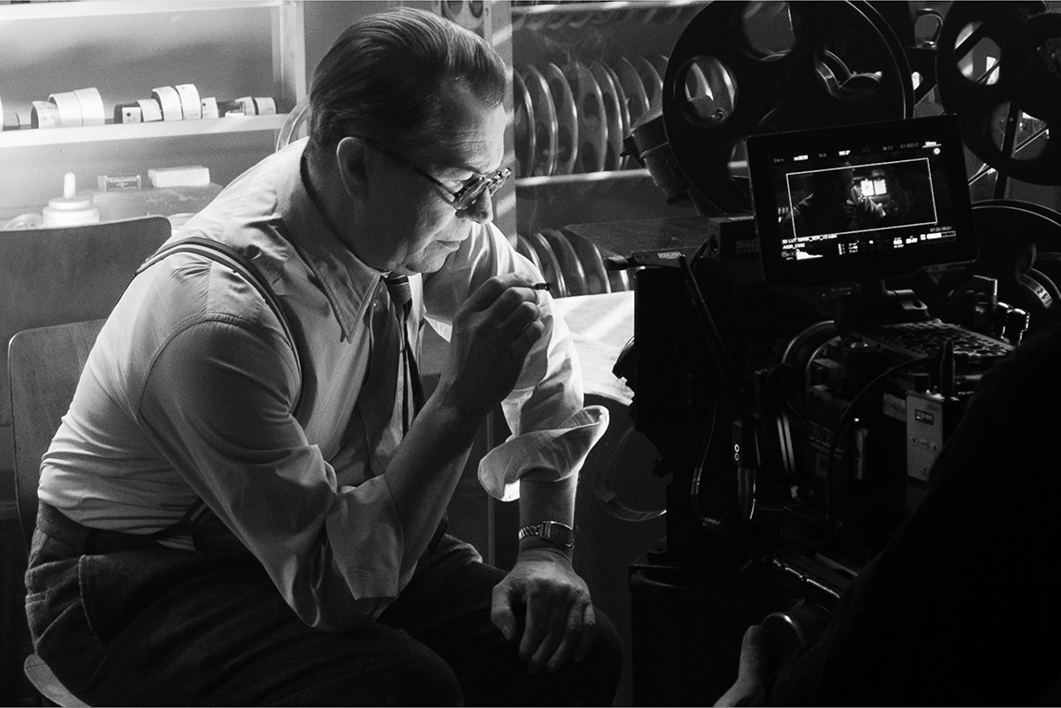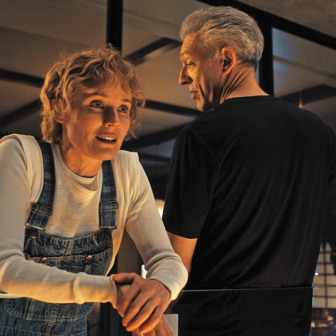It’s hard to know what David Fincher’s Mank would mean to film-watchers who don’t know Citizen Kane. But: (a) are there many such persons?; (b) if they exist, they should quickly repair this crucial omission from their film-going histories; and (c) Mank is an absorbing enough study in its own right to warrant attention. It is of course a Netflix production, which means that it had a shorter run in the cinemas than it deserved, and a film about filmmaking probably benefits from being seen on the kind of screen for which it was made. Meanwhile, it’s available on the small screen.
Set in 1930s Hollywood, Mank has not so much a starry cast as a cast full of starry characters. Names like Louis B. Mayer and Irving Thalberg may not mean much to younger viewers who aren’t dedicated movie buffs, but these “names” undoubtedly help to create a convincing sense of the world in which Mank — that is, screenwriter Herman J. Mankiewicz — was active in the decade leading up to producing the screenplay for Orson Welles’s triumphant cinematic debut, Citizen Kane. That they received co-credit for the finished script has been the subject of ongoing controversy, most notably in Pauline Kael’s Raising Kane. Mank touches on this matter when Welles brings his critical notes to Mank, but the film is essentially on the side of its often difficult eponym.
Introductory titles providing information about Welles give way to a long shot, in black-and-white, of a car speeding through a sprawling Californian landscape and arriving at the Victorville Guest Ranch in the Mojave Desert. Emerging from the car on crutches is Mank (Gary Oldman), and the rest of the film is structured around his current (1939) situation: that is, his relative immobility and his working away at the Kane screenplay. He finds his own way of coping with the Guest Ranch’s no-alcohol policy.
The twenty-four-year-old Welles (Tom Burke) makes a brief visit, and there is talk of the wildly wealthy and powerful newspaper baron, William Randolph Hearst, who was the real-life basis of Charles Foster Kane, a parallel that didn’t help Citizen Kane at the box office. We don’t see Welles again until near the end, but his off-screen presence is felt, often in phone calls to Mank.
In a narrative mode that recalls that of Kane, Fincher’s Mank reveals itself through a series of flashbacks showing the screenwriter’s struggles throughout the 1930s as he came to acquire high regard, often alongside fractious dealings with the major studios of the era. His writing receives praise for its “shifting point of view” from John Houseman (British actor Sam Troughton), co-founder with Welles of the Mercury Theatre, New York, who appears to have been appointed a sort of watchdog keeping an eye on Mank’s less reliable qualities.
Fincher, working from his late father Jack Fincher’s screenplay, situates Mank’s personal conflicts with Hollywood studios and their moguls in the wider conflicts of the American political scene. Mank fervidly supports Democratic candidate Upton Sinclair in the 1934 election for the governor of California, for instance. When Sinclair loses, Mank, accompanied by his wife Sara (Tuppence Middleton), quits the election-night party without a word. He is not, either professionally or personally, a man with a talent for easy discourse.
But it is the Hollywood politics that matter more to Mank’s career in the 1930s. One of the “names” introduced at this point is that of screenwriter Charles Lederer (Joseph Cross), nephew of Hearst’s mistress, the glittering star Marion Davies (Amanda Seyfried). And so it goes on: the film invokes name after name from the era, including the one with whom Mank will have most lethal conflict, Louis B. Mayer, who is described as “very despotic and full of self.” In Arliss Howard’s eye-catching performance, Mayer becomes the dominant oppositional figure, beside whom the likes of David O. Selznick (Toby Leonard Moore) and Irving Thalberg (Ferdinand Kingsley) seem almost benign.
Hovering over the Hollywood scene, professionally and politically, is the plutocratic presence of Hearst, played with subtle charisma by Charles Dance. A British actor chosen for an archetypal American tycoon might seem unusual, but Dance compels attention without recourse to clichés of dominance. Hearst’s “castle,” San Simeon — scene of some extravagant gatherings in the film, including a birthday party for Mayer — is the obvious prototype of Welles’s Xanadu in Kane. Mank’s younger brother Joe (Tom Pelphrey) tries to warn Mank about writing a script that gets at Hearst, and Davies tries to persuade him not to “kick Willie when he’s down.” As for the script in contention, the film shows images of screwed-up paper and piles of manuscript pages as Mank lies in bed, relying on Houseman’s urging him to get on with it.
What the film offers, then, is an insight into the tangle of motivations at work in Mank, some personal, some professional, and Fincher has been fortunate in securing Oldman (another British actor) to bring his protagonist to such vivid life at various stages of his career. Oldman, now an established character star in the wake of such roles as Churchill in Darkest Hour (2017), maintains a sure grasp on our interest and, up to a point, our sympathy for a not especially likeable man with clear viewpoints and talents.
While most of the film’s action involves men competing to have their views prevail, Amanda Seyfried catches the aura of stardom as Marion Davies, and Tuppence Middleton exudes a touching forbearance as Mank’s wife. As for Welles, Tom Burke reappears near the end to assert his pre-eminence in what will be the credits for Citizen Kane, with Mank insisting, “I want credit.” In real life, the much-nominated Kane won only one Oscar: that for the screenplay, shared by Mank’s two protagonists. Mank itself is up for ten Oscars and has also been nominated for Golden Globes and BAFTAs, among others.
The names of Oldman and Fincher appear frequently in awards lists, and it is good to find Fincher back at the directorial helm of a feature film for the first time since his memorable 2014 version of Gillian Flynn’s thriller Gone Girl. Mank’s running time may seem slightly excessive, but Fincher’s firm grip on the fluidity of the present–past interplay wards off longueurs — and leaves one hoping there won’t be such a time gap before his next feature appears. •




